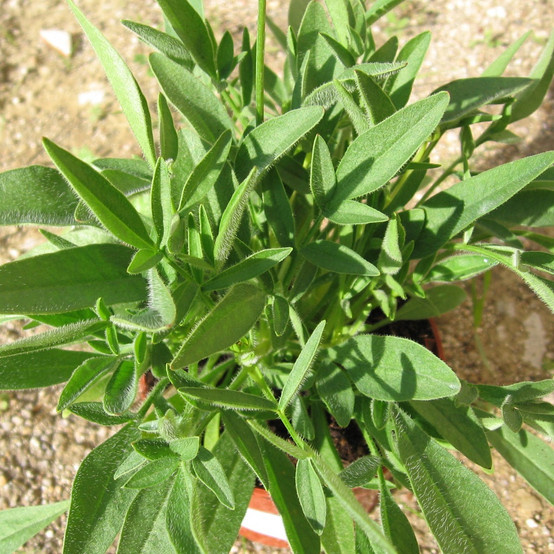Coreopsis grandiflora
- Admin

- Sep 14, 2021
- 3 min read
Updated: Nov 22, 2021

With a species epithet like grandiflora, meaning with large flowers, one should have great expectations, but let's temper our excitement just a little. When this species was named, what was it compared to? The genus, Coreopsis, has some pretty spectacular bloomers, such as C. verticillata or C. lanceolata, but all three species including C. grandiflora have similarly sized flowers and are prolific. This is an outstanding question for me, but I will not lose any sleep over it. My focus is on the reliable sunny color over the summer months.
I planted common coreopsis, as some may call it, in a park strip landscape and was pleased with the results. A park strip, or to use our professional jargon, parkstrip, is that typically small landscaping area between...here comes more jargon...back of curb and edge of sidewalk. For most cities, this area is a part of a public/private partnership that most adjacent property owners are not aware of their commitment to maintain when they purchase the property. Every city has variations on the same theme, but property owners are responsible for its care and repairs, including the actual sidewalk. And surprise, cities have the authority to tell the owner when repairs are needed. If the repairs are not completed within a certain amount of time, then the city might opt to make the repair and send the bill to the owner. San Francisco is a little different; the citizens approved a minor tax increase to fund the city taking over primary landscape responsibility, which in this case means the street trees.
All this tangential chatter from a memory about Coreopsis grandiflora, but I bring it up because 1) it is a small public service announcement, like "The More You Know" campaigns, 2) for property owners and designers alike, they should be familiar with what they can and cannot do with these quasi-public spaces along the roadway, and 3) C. grandiflora is representative of just the right size plant for these typically smaller spaces. In fact, Sunset states common coreopsis is "tough enough for use in roadside beautification" (p. 260). That does not mean one should seed bomb the byways of California...use our native poppies for that rogue effort. C. grandiflora does need irrigation, another reason why roadside plantings really does not work well in non-irrigated areas.
Reaching two feet high or taller and spreading about the width of many parkstrips, about three feet, it fills in nicely, especially when this tickseed is in full bloom. After a primary bloom, give the plant a trim to encourage continuing blooms through the warm season. Paired with similarly sized summer blooming plants, such as Teucrium x lucidrys and some Hemerocallis, and that lonely parkstrip...well...pretty!
Iowa State University Department of Horticulture offers a quick look at a specimen out of bloom plus a contrast with another species for comparison.
facts
Botanical Name: Coreopsis grandiflora
Coreopsis: Greek, korios for bedbug, since the seeds have a similar appearance
Grandiflora: Having large flowers
Common Name: Common coreopsis; large flower tickseed; largeflower tickseed; tickseed
Family Name: Asteraceae
Origin: Southeastern United States to Canada
design considerations
Positioning: Foreground, informal areas, small spaces
Garden Themes: Cottage, pollinator, rock, perennial, courtyard/patio, rain
Uses: Border, mass, container, filler, green stormwater infrastructure
identifying characteristics
Type: Herbaceous perennial
Form: Clumping, cascading, erect when in bloom
Texture: Medium
Size: 36" tall and wide, may be smaller in California
Outstanding Feature(s): Flower
Stem: Medium green; die back to ground in winter
Leaf:
Type: Simple
Arrangement: Opposite
Shape: Linear at base of plant; leaves ascending flower stalks become pinnatifid
Margin: Entire at base of plant; leaves ascending flower stalks become deeply lobed
Color: Medium to light green
Surface: Glabrous to lightly pubescent
Flower: Spring to summer. Radial heads, showy, all yellow to gold.
Fruit: Summer to autumn. Very small achene.
cultural requirements, tolerances & problems
Sunset Zones: 2-24; H1, H2
USDA Zones: 4-9
Light: Sun
WUCOLS SF Bay Area Hydro Zone: Moderate
Soil:
Texture: Sand, clay, rocky
Moisture Retention: Well-drained with brief periods of dry
pH: Highly acidic to lightly alkaline
Tolerances: Drought, deer, poor soils, standing water
Problems: Reseeding, spreading, may compete with other plants
Branch Strength: N/A
Insects: Aphids, leaf hoppers
Disease: Leaf spot, powdery mildew
citations & attributions
Bayton, R. (2019). The Royal Horticultural Society's the Gardener's Botanical: An Encyclopedia of Latin Plant Names. London: Mitchell Beazley.
Extension Gardener. "Coreopsis grandiflora." North Carolina State University, Raleigh. Accessed on September 14, 2021, from https://plants.ces.ncsu.edu/plants/coreopsis-grandiflora/.
Norris Brenzel, K. (Ed.). (2012). The New Sunset Western Garden Book. New York: Time Home Entertainment, Inc.
Water Use Classification of Landscape Species. "WUCOLS IV Plant List." University of California, Division of Agriculture and Natural Resources, Davis. Accessed on September 7, 2021.
Photos:
Coreopsis grandiflora 'Sunfire': "Coreopsis grandiflora cultivar" by Jon Sullivan is licensed under Creative Commons Attribution-NonCommercial 2.0 Generic (CC BY-NC 2.0).
Feature flower detail: "Coreopsis grandiflora 002" by Kor!An (Андрей Корзун) is licensed under Creative CommonsAttribution-Share Alike 3.0 Unported.
Flower mass: "Coreopsis grandiflora 003" by Kor!An (Андрей Корзун) is licensed under Creative CommonsAttribution-Share Alike 3.0 Unported.
Potted plant without blooms w/compound leaves: "Coreopsis grandiflora 02" by José Luis Gálvez is licensed under Creative CommonsAttribution-Share Alike 2.5 Generic.










Comments